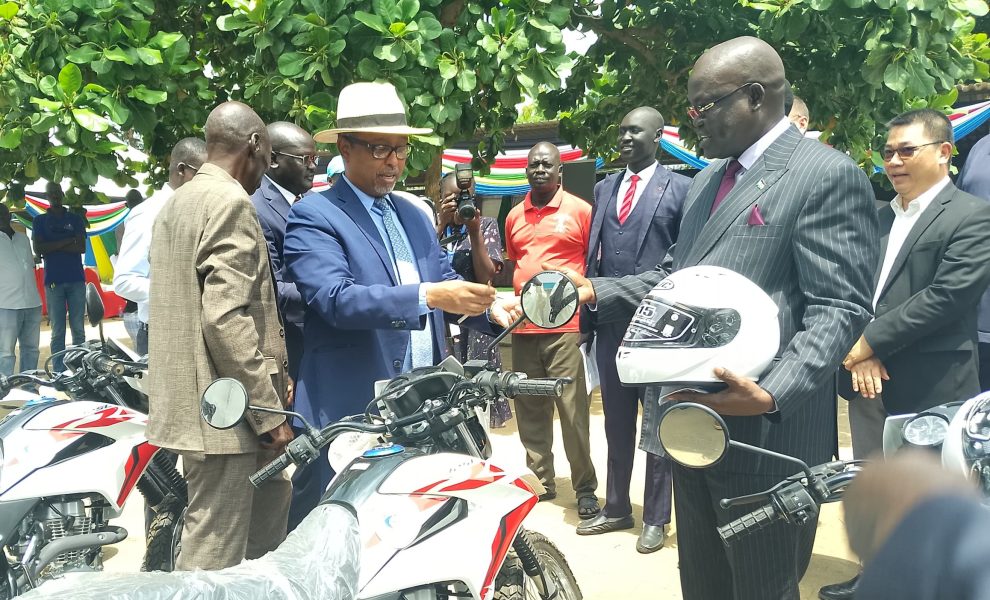
South Sudan’s internal displacement crisis has reached staggering levels, with more than 2 billion people reportedly evacuated within the country, according to the chairperson of the Relief and Rehabilitation Commission, Stephen Kueth Gach.
The figures, disclosed Thursday during a UNDP handover event in Juba, shade a dire picture of a nation overwhelmed by deepening communal violence and worsening climate shocks.
According to relief chief, the mass displacement, driven largely by deadly intercommunal clashes and severe climate disasters, is exacerbating one of the world’s most protracted humanitarian emergencies.
“Families continue to flee their homes due to deadly cattle raids, land disputes, and flooding that renders entire regions uninhabitable.”
He was speaking at the event, which saw the distribution of motorbikes and brick-making machines under the UNDP’s Achieving Durable Solutions initiative.
Gach emphasized the urgent need for practical, long-term interventions that go beyond emergency aid.
“These machines are a step towards empowering displaced communities to rebuild their lives and reduce dependency,” he said.
He noticed that sustainable peace and climate resilience are essential to curbing further displacement.
Minister of Humanitarian and Disaster Management, Albino Atak Bol, stressed the urgent need to empower displaced populations with practical tools for recovery.
He announced that the brick-making machines, donated under the UNDP’s Achieving Durable Solutions initiative, would be distributed to states hosting high numbers of refugees and returnees.
These machines, according to him, would enable affected communities to start rebuilding homes and restoring a sense of normalcy after years of conflict and displacement.
Atak emphasized that while humanitarian aid remains essential, sustainable recovery must focus on self-reliance and dignity.
He urged a shift from short-term relief to long-term support that enables communities to lead their own rebuilding process.
“Our people need more than temporary shelter, they need the means to rebuild their lives from the ground up,” he said.
UNDP Resident Representative Dr. Mohammed Abchir highlighted that the brick-making machines are part of a broader effort to equip displaced communities with skills and sustainable livelihoods.
He noted that beneficiaries would also receive hands-on training in machinery operation and brick production, allowing them to not only rebuild homes but also generate income and strengthen community resilience.
Dr. Abchir highlighted the project’s long-term vision, aimed at breaking the cycle of dependency through economic empowerment.
“This initiative is not just about equipment, it’s about opportunity. When communities are given the skills and tools to rebuild, they take ownership of their recovery and contribute meaningfully to peace and development,” Abchir said.
Despite international support, South Sudan remains trapped in a cycle of instability, with state structures still too weak to ensure security or deliver essential services to millions caught between violence and natural disasters.
The displacement figures reflect a worsening humanitarian outlook—one that demands both immediate relief and sustained political will to resolve.

